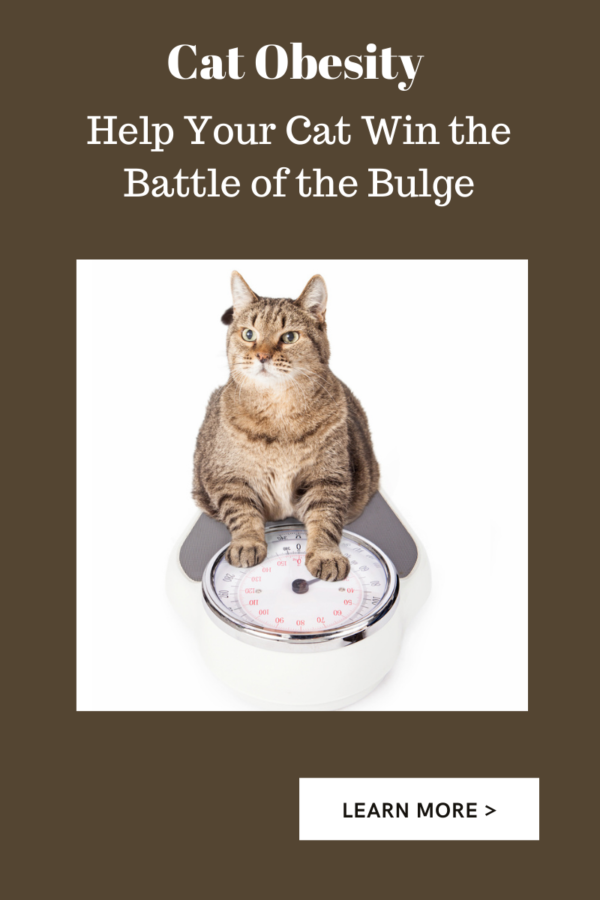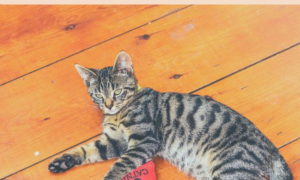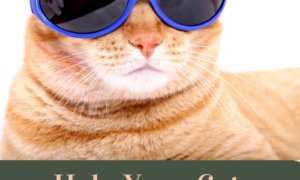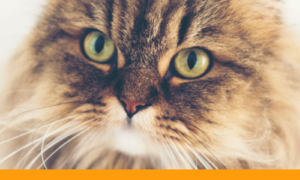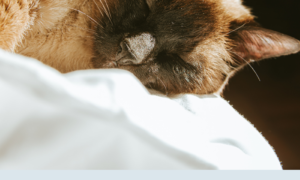Research shows carrying extra weight leads to health problems, so it’s important to monitor our weight and nip gains in the bud.
We should pay attention to our pet’s weight too. According to a survey conducted by the Association for Pet Obesity Prevention (APOP), 59% of cats in the US are either overweight or obese.
Disclosure: This post contains affiliate links. We receive a small commission on goods purchased via these links, at no additional cost to you.
Why Pet Obesity Happens
So what does cause feline obesity? Lifestyle. Much like us, overweight cats are that way because of overeating and lack of exercise. Some cats are good at regulating their food intake, others are not. If too much food is made available to them, they will eat it. Indoor cats generally dont have much stimulation in their environment — they aren’t stalking, chasing, jumping.
Right now, I’m catsitting for three cats. Patty is quite overweight. Her people free feed Patty and her two cat siblings. Unfortunately, Patty isn’t good at regulating her food intake, leading to her weight gain.
One physical cause of cat obesity is hypothyroidism, an underperforming thyroid that slows down metabolism. This condition affects middle aged to senior cats, and can be controlled with medication.
Reversing Pet Obesity To Get Your Cat To Healthy Weight
Diet
To begin the weight loss effort with your cat, you’ll need to be aware of how many calories your cat needs per day. According to a worksheet developed by petobesityprevention.org, a typical domestic cat’s ideal weight is 8-10 pounds. A cat weighing 8 pounds needs 150 calories per day, while a cat weighing 10 pounds requires 170 calories per day. Have your cat examined by a veterinarian to determine the appropriate weight for your cat, and he can also provide guidance on the amount of food to feed daily to help with weight loss.
It’s important that your cat loses weight gradually, and that he does eat his food allotment daily. Failure of cats to eat can lead to a very serious liver condition, hepatic lipidosis. Since your cat won’t have as many calories per day, try feeding a canned diet with several small meals throughout the day, ensuring you don’t go over the caloric count that will help with weight loss.
Treats have calories, too, so if giving your cat treats daily, be sure to include those calories in his daily calorie allowance. Don’t overtreat your cat. Remember, treats are just that, comparable to dessert for us. Look for those low in calories (I give Marty Purebites duck freeze dried treats, 2 calories per treat).
Exercise
A gym membership may not be in your kitty’s future, but exercise should be on the menu. If your cat is used to being sedentary much of the time, take some time to determine what your cat responds to. Cats, much like us, tend to eat from boredom. Providing mental stimulation will get his mind focused on play rather than food.
He may enjoy chasing a laser light, which you can operate from the couch. I often use a fishing pole toy that gives your cat a chance to practice his hunting skills.
Below is a video I recorded yesterday during my visit with Patty and her siblings. Since she does tend to get winded easily, I pause often to give her a chance to catch her breath. Patty seems to really enjoy playtime, so it seems boredom is a trigger for her overeating.
Make your cat work for his food — move his food bowl so he has to go get it. Even better, try a food dispensing toy. These provide a chance for cats to practice hunting skills and provides exercise.
If your house has an upstairs and your cat is used to laying close to his food bowl downstairs, put the bowl upstairs, he’ll soon figure out he has to go upstairs to access it.
Multi-Cat Households
If you have one overweight cat, how do you manage feeding in a multi-cat household? Here are some suggestions:
- Put the normal weight cat’s food in a location the overweight cat isn’t able to access
- Don’t leave food out when you’re away. There’s a very good chance the dieting cat will eat food if it’s available
- Feed meals in separate room. Feed the overweight cat in one room, the other cat in a different room. After 15-30 minutes, pick up any uneaten food.
Conclusion
Pet obesity is becoming a widespread problem, but being aware of your cat’s diet and providing him plenty of exercise will help keep him healthy and happy for years to come.
For more information on pet obesity prevention, go to petobesityprevention.org. This site has a great library of resources to help manage pet obesity for both cats and dogs.
One section I found very informative was the Pet-to-Human-Weight-Translator. This takes your pet’s current weight and translates it to how that weight would appear as a human with comparable scaled frame. I highly recommend checking out this site and using the resources available, many of them located in the Tools Section of the site.
Before embarking on a weight loss program for your cat, consult your veterinarian. It is important to rule out any physical reasons for the added weight before tackling activity and dietary changes. Once you begin the program, check in with your vet frequently to monitor progress and make any necessary changes.

